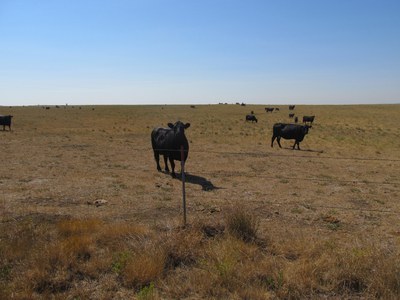Alternative Crops During a Drought

June 2017
Hans Kandel, NDSU Extension Agronomist
Meeting Forage and Grain Needs in an Emergency
If planting was postponed or plants didn't survive because of drought, mid-summer planting may be necessary for adequate forage or grain. You also may be concerned about feed supplies for next year and, therefore, wish to plant additional crops in the fall.
Unfortunately, no one can predict the longevity of a drought. But you do have options, and the knowledge that planning ahead is always a good idea.
Alternative Forages
Before giving up on existing crops, examine your current crops for silage potential. For example, corn may be the best forage alternative available. Also, keep in mind the added labor and cost of establishing alternative crops. Unfortunately, there is no guarantee on the yield or quality of alternative forages.
Existing crops as alternative forages. Test these forages and use the data to obtain efficient use through balanced rations:
- Alfalfa, red clover, trefoil
- Corn and soybeans
- Peas or canning crops
- Small grains
- Grasses.
Summer-seeded crops. These generally should be seeded by July 15, but only if moisture is available for germination and emergence. Crops include:
- Sudan, sorghum-sudan, and forage sorghum
- Hybrid pearl millet
- Soybeans (alone or mixed with sorghum-sudan)
- 70-day corn
- Brassicas - forage rape, turnips
- Millets - common, German, foxtail or Japanese
- Buckwheat
- Winter grain with field peas. These should be planted from mid- to late-August.
Alternative cash crops. If you planted cash crops, such as wheat or corn, but drought is causing problems, you may decide to replant. Some good alternatives are buckwheat and millet, which can be planted in July. These are very short-season crops and both are high in fiber. Consider whether you have a market to sell these two crops or whether you can feed them to livestock.
Meeting Demands for Next Year
Spring grains. If moisture is available for germination and emergence, you can plant spring grains, such as wheat, oats or barley, in August. These can be harvested until a hard freeze, which usually occurs in late October.
Winter rye and winter wheat. For the earliest harvest of forage next spring, plant winter rye in September. It can be harvested mid-May. Another alternative is winter wheat, which has a higher forage yield, but must be harvested seven to 10 days later.
Reducing the Risk of Drought Stress
The only sure method to avoid drought-stressed crops is to use irrigation. However, other management practices can help reduce the risk of drought stress.
Early planting. By planting early, you increase the chance of having pollination completed before the driest part of the season.
Optimum fertilization. Proper fertilization will promote healthy plant growth and efficient moisture utilization, essential for high yields in normal and dry years.
Adequate weed control. Weeds compete with crop plants for water, so controlling weeds will provide more soil moisture for the crop.
Residue management. By maintaining a cover of residue through conservation tillage or no-till, you can reduce the amount of evaporation from the soil surface and conserve water for the crop's use.

